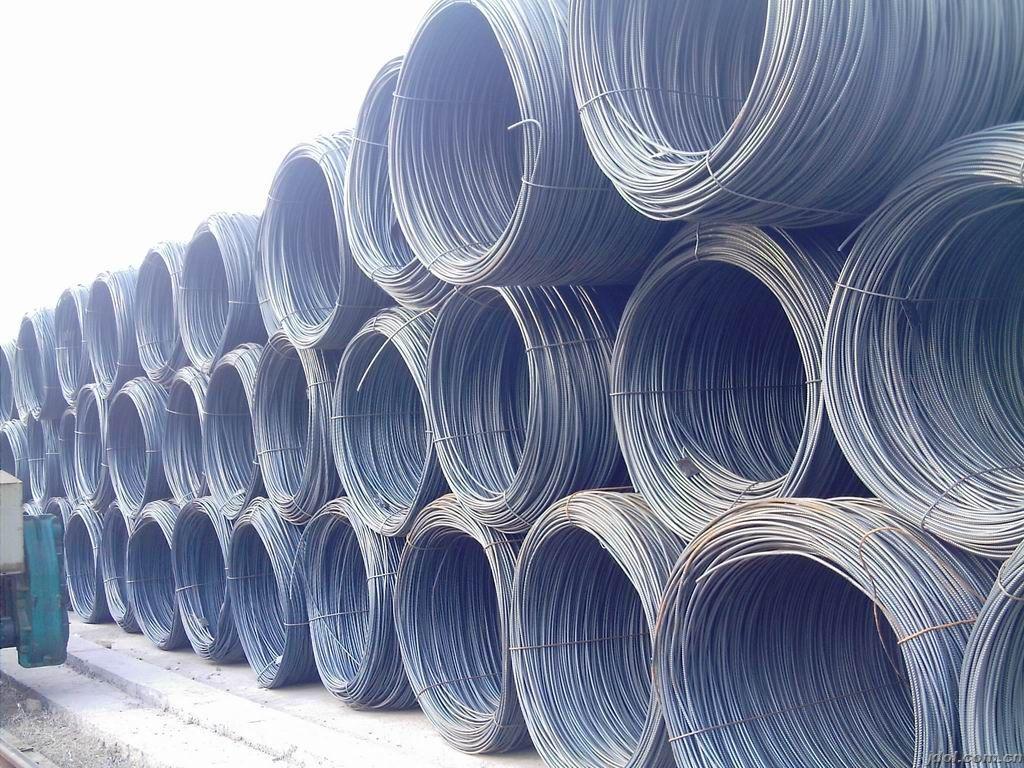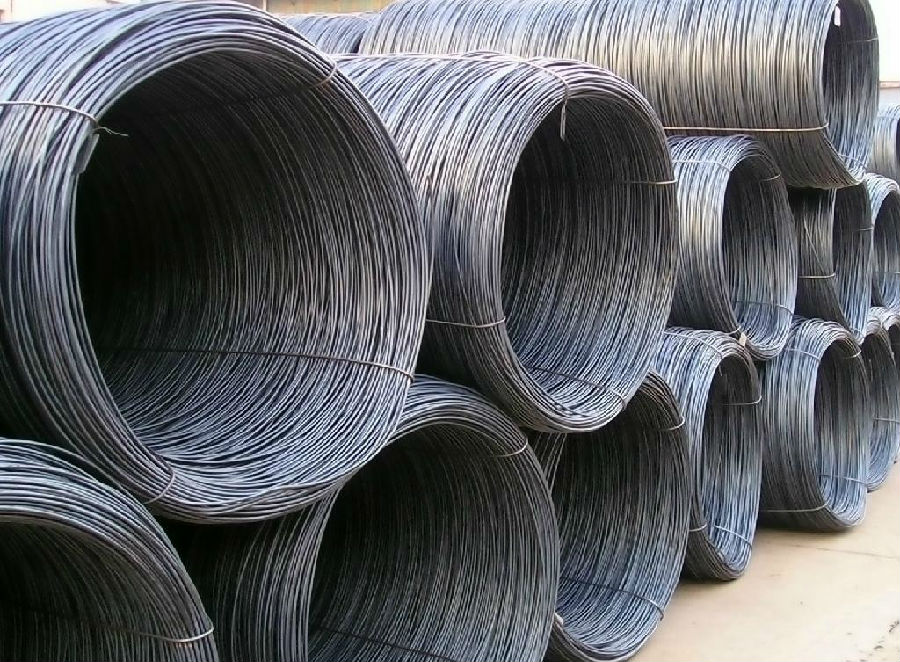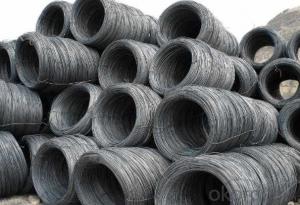Low Carbon Steel Wire Rod with Alloy Element Added
- Loading Port:
- Tianjin
- Payment Terms:
- TT or LC
- Min Order Qty:
- 100 m.t.
- Supply Capability:
- 35000 m.t./month
OKorder Service Pledge
OKorder Financial Service
You Might Also Like
OKorder is offering Low Carbon Steel Wire Rod with Alloy Element Added at great prices with worldwide shipping. Our supplier is a world-class manufacturer of steel, with our products utilized the world over. OKorder annually supplies products to African, South American and Asian markets. We provide quotations within 24 hours of receiving an inquiry and guarantee competitive prices.
Product Applications:
Low Carbon Steel Wire Rod with Alloy Element Added are ideal for structural applications and are widely used for reinforcement of reinforced concrete and welded structure or reprocessed (roberts , nail, etc.) materials, especially used to produce wire drawing, welding electrode, nails, spring, electronic, precise machinery parts and so on..
Product Advantages:
OKorder's Low Carbon Steel Wire Rod with Alloy Element Added are durable, strong, and wide variety of sizes.
Main Product Features:
· Premium quality
· Prompt delivery & seaworthy packing (30 days after receiving deposit)
· Can be recycled and reused
· Mill test certification
· Professional Service
· Competitive pricing
Product Specifications:
Manufacture: Hot rolled
Grade: SAE1008
Certificates: ISO, SGS, BV, CIQ
Packed: prproduct packed in coils, usually shipped by bulk vessel
Coil weight: about 2mts/ coil
Grade | Chemical Composition(%) | |||||
C | Mn | Si | S | P | B | |
SAE1008B | 0.10max | 0.3~O.50 | 0.15max | 0.050max | 0.040 max | 0.0008 min |
Mechanical properties | ||||||
Yield strength(N/mm2) | Tensile strength(N/mm2) | Elongation(%) | ||||
≥195 | 315-430 | ≥30 | ||||
Grade | Chemical Composition(%) | |||||
C | Mn | Si | S | P | B | |
Q195B | 0.06~O.12 | 0.25~O.50 | ≤0.30 | ≤0.050 | ≤0.045 | >0.0008 |
Mechanical properties | ||||||
Yield strength(N/mm2) | Tensile strength(N/mm2) | Elongation(%) | ||||
≥195 | 315-430 | ≥33 | ||||
FAQ:
Q1: Why buy Materials & Equipment from OKorder.com?
A1: All products offered byOKorder.com are carefully selected from China's most reliable manufacturing enterprises. Through its ISO certifications, OKorder.com adheres to the highest standards and a commitment to supply chain safety and customer satisfaction.
Q2: How do we guarantee the quality of our products?
A2: We have established an advanced quality management system which conducts strict quality tests at every step, from raw materials to the final product. At the same time, we provide extensive follow-up service assurances as required.
Q3: How soon can we receive the product after purchase?
A3: Within three days of placing an order, we will arrange production. The normal sizes with the normal grade can be produced within one month. The specific shipping date is dependent upon international and government factors, the delivery to international main port about 45-60days.
Q4: How many tons of steel products could be loaded in containers?
A4: Usually the steel products are delivered by bulk vessel because of the large quantity and the freight. However, there are no bulk vessel enter some seaports so that we have to deliver the cargo by containers. The 6m steel product can be loaded in 20FT container, but the quantity is changed according to the size, usually from 18tons to 25tons.
Images:


- Q:How is steel wire rod used in the manufacturing of wire forms for automotive exhaust systems?
- Steel wire rod is used in the manufacturing of wire forms for automotive exhaust systems as it provides strength, durability, and flexibility required for various components such as hangers, brackets, and supports. It is typically shaped, bent, or welded into the desired form to create these components, ensuring proper fit and function within the exhaust system.
- Q:What are the common production processes for silver-coated steel wire rod?
- The common production processes for silver-coated steel wire rod include wire drawing, cleaning, coating, drying, and packaging.
- Q:What are the factors that affect the strength of steel wire rod?
- The factors that affect the strength of steel wire rod include the composition of the steel, the manufacturing process used, the heat treatment applied, the presence of impurities or defects, and the level of strain or stress the wire rod is subjected to. Additionally, factors such as the diameter, length, and surface condition of the wire rod can also influence its strength.
- Q:How is steel wire rod tested for internal soundness?
- Steel wire rod is tested for internal soundness using non-destructive testing techniques such as ultrasonic testing or eddy current testing. These methods involve the use of specialized equipment to detect any internal defects or anomalies in the wire rod without damaging the material. The testing process allows for the identification of any internal flaws, such as cracks or inclusions, ensuring that the wire rod meets the required quality standards and is suitable for its intended applications.
- Q:What are the different heat treatment processes for steel wire rod?
- There are several heat treatment processes for steel wire rod, including annealing, quenching, tempering, and normalizing. Each process has its own purpose and benefits. Annealing is used to soften the wire rod and improve its ductility. Quenching involves rapidly cooling the wire rod to harden it and increase its strength. Tempering is a process where the wire rod is reheated after quenching to reduce brittleness and improve toughness. Normalizing is similar to annealing, but it involves cooling the wire rod in still air to achieve a more uniform structure. These heat treatment processes can be used individually or in combination to achieve specific properties and characteristics desired for the wire rod.
- Q:What are the environmental considerations associated with steel wire rod production?
- Several environmental factors must be taken into account in the production of steel wire rods. One major concern is the energy consumption and greenhouse gas emissions associated with the manufacturing process. Typically, high temperatures required for steel wire rod production are achieved by burning fossil fuels like coal or natural gas, which releases carbon dioxide and contributes to climate change. Moreover, the extraction of raw materials for steel wire rod production, such as iron ore and coal, can have detrimental effects on the environment. Mining activities can lead to deforestation, destruction of habitats, and soil erosion. Additionally, the transportation of these raw materials to production facilities can result in further carbon emissions. Water usage is also a significant environmental consideration. Steel wire rod production necessitates large amounts of water for cooling and removing impurities. This can strain local water resources, especially in areas with limited availability or during droughts. Effective waste management is crucial in steel wire rod production. The process generates various by-products and waste materials, including slag and dust. Proper disposal or treatment of these waste materials is essential to prevent pollution of soil, water, and air. Furthermore, the use of chemicals and additives in steel wire rod production can have indirect environmental impacts. These substances may be utilized for corrosion prevention or enhancing mechanical properties. Poor handling or disposal of these chemicals can lead to environmental contamination. To address these environmental concerns, steel wire rod producers should invest in cleaner and more energy-efficient technologies, such as utilizing renewable energy sources or implementing energy-efficient furnaces. Additionally, recycling scrap steel instead of solely relying on virgin materials can significantly reduce the environmental impact. Implementing water conservation measures and developing comprehensive waste management plans are also crucial in minimizing the environmental footprint of this manufacturing process.
- Q:What are the main factors influencing the choice of steel wire rod quality standards?
- The main factors influencing the choice of steel wire rod quality standards include the intended application or use of the wire rod, industry regulations and standards, customer requirements, and the overall quality and performance expectations of the end product. Additionally, factors such as cost, availability, and the reputation of the supplier or manufacturer may also play a role in determining the standards for steel wire rod quality.
- Q:What are the different tensile testing methods for steel wire rod?
- There are several different tensile testing methods that can be used to evaluate the mechanical properties of steel wire rods. These methods are designed to measure the strength, ductility, and other important characteristics of the material. Some of the most commonly used tensile testing methods for steel wire rods include: 1. Standard Tensile Test: This is the most basic method of tensile testing, where a sample of the steel wire rod is subjected to an increasing tensile load until it fractures. The load and elongation are continuously measured, allowing for the calculation of properties such as ultimate tensile strength, yield strength, and elongation at fracture. 2. Charpy Impact Test: This method evaluates the impact toughness of the steel wire rod by measuring the energy absorbed during the fracture of a notched specimen. It involves striking the sample with a pendulum hammer and recording the energy absorbed as the hammer breaks the specimen. This test is particularly useful for determining the resistance of the material to sudden impact or shock loading. 3. Bend Test: In this method, a steel wire rod specimen is bent to a specific angle without fracturing. The bend test is used to assess the ductility and resistance to cracking of the material. The sample is typically bent around a mandrel of a specified diameter, and any signs of cracking or fracture are noted. 4. Hardness Test: Hardness testing is a non-destructive method used to determine the resistance of the steel wire rod to penetration or indentation. Various hardness testing methods are available, including Rockwell, Brinell, and Vickers tests. These tests involve applying a known load to the specimen surface and measuring the depth or size of the resulting indentation. Hardness values can be correlated to tensile strength, making it a useful technique for quality control purposes. 5. Fatigue Test: Fatigue testing is used to evaluate the endurance limit and fatigue life of the steel wire rod under repeated cyclic loading. The specimen is subjected to a varying load or stress amplitude over a specified number of cycles until failure occurs. This test helps determine the material's ability to withstand repetitive loading conditions over time. Overall, these different tensile testing methods provide valuable insights into the mechanical properties of steel wire rods, helping engineers and manufacturers ensure the material meets the required specifications for their intended applications.
- Q:How are surface defects in steel wire rod repaired?
- Surface defects in steel wire rod can be repaired by various methods such as grinding, peeling, or machining. These processes involve removing the defective area, exposing the sound material beneath, and then reshaping or refinishing the surface to restore its integrity. Additionally, heat treatment processes like annealing can be employed to further enhance the mechanical properties of the repaired wire rod.
- Q:What are the common industry guidelines for steel wire rod professionals?
- The common industry guidelines for steel wire rod professionals include adhering to strict quality control measures, ensuring compliance with safety regulations, maintaining proper handling and storage practices, conducting regular inspections and tests, and keeping up with technological advancements in wire rod production and processing. Additionally, professionals are expected to prioritize customer satisfaction, foster strong communication and collaboration within the industry, and stay updated on market trends and industry standards.
1. Manufacturer Overview |
|
|---|---|
| Location | |
| Year Established | |
| Annual Output Value | |
| Main Markets | |
| Company Certifications | |
2. Manufacturer Certificates |
|
|---|---|
| a) Certification Name | |
| Range | |
| Reference | |
| Validity Period | |
3. Manufacturer Capability |
|
|---|---|
| a)Trade Capacity | |
| Nearest Port | |
| Export Percentage | |
| No.of Employees in Trade Department | |
| Language Spoken: | |
| b)Factory Information | |
| Factory Size: | |
| No. of Production Lines | |
| Contract Manufacturing | |
| Product Price Range | |
Send your message to us
Low Carbon Steel Wire Rod with Alloy Element Added
- Loading Port:
- Tianjin
- Payment Terms:
- TT or LC
- Min Order Qty:
- 100 m.t.
- Supply Capability:
- 35000 m.t./month
OKorder Service Pledge
OKorder Financial Service
Similar products
New products
Hot products
Related keywords




























